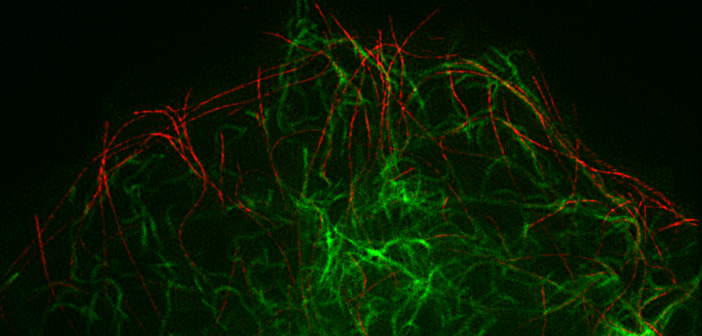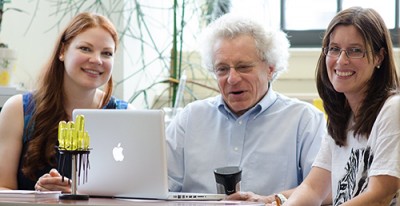
A human cell’s cytoskeleton – the protein network that supports its shape and function – is made of three components. Scientists know a lot about two of them, microfilaments and microtubules, but they’ve only recently had the technological advances to study the dynamics of the third in detail.
In a new pair of studies, Northwestern Medicine scientists help explain how this third component – slender, threadlike structures called intermediate filaments – moves and assembles to protect cells.
The work, led by Vladimir Gelfand, PhD, Leslie B. Arey Professor of Cell, Molecular, and Anatomical Sciences in the Department of Cell and Molecular Biology, may someday have applications for patients with genetic mutations that affect intermediate filaments and their important mechanical properties.
“Cells go through mechanical stress all the time. When we move, they essentially have to change their shape to resist the mechanical stress,” Gelfand said. “But intermediate filaments were not known as a very dynamic structure. So the big question was, how do they rearrange?”
In one paper, published in Molecular Biology of the Cell, Gelfand and first author Caroline Hookway, a doctoral student in the Northwestern University Interdepartmental Neuroscience Program (NUIN), showed that intermediate filaments are transported in cells along microtubules, one of the other components of the cytoskeleton.
The scientists were able to make this discovery using newly developed optical probes and superresolution microscopy at Northwestern University’s Nikon Imaging Center. Intermediate filaments are too small to visualize individually with traditional microscopy.

They also found that intermediate filaments rearrange in a cell through an extensive severing and recombination process.
“Mature filaments get chopped up into bits and then those bits come back together to make a new filament,” Hookway said.
That process explains one way intermediate filaments are assembled. But they’re also formed from scratch – from a building block of 32 individual protein chains stacked together. In a second paper published in Proceedings of the National Academy of Sciences (PNAS), Gelfand and first author Amélie Robert, PhD, a postdoctoral fellow, demonstrated that pieces of this building block rapidly exchange subunits during the first step of intermediate filament assembly, in a way they can’t in fully developed filaments.
“You can readjust subunits of the building block in the beginning, but not once they’re all incorporated into the mature filament,” said Robert.
Both studies worked with an intermediate filament protein called vimentin, because it’s found in all connective tissue. In addition, epithelial cells start expressing this protein when they become cancer cells. For these reasons, findings involving vimentin could have broad applications.
In future research, the scientists hope to identify all the building block proteins in cells that interact with intermediate filaments and to find out their functions to understand how this cytoskeletal component is regulated.
Both published studies were supported by National Institutes of Health (NIH) National Institute of General Medical Science (NIGMS) grant P01GM09697, a program project grant led by Robert Goldman, PhD, chair of Cell and Molecular Biology. The study in PNAS was also supported by NIGMS grant R01 GM52111 and American Heart Association Fellowship 13POST16210010.






